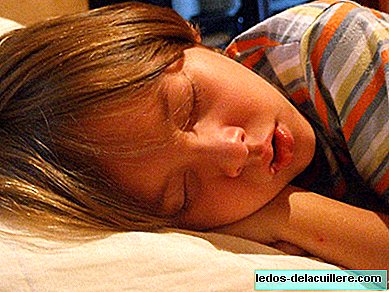
One way to help children with any of the so-called rare diseases is to make them known. Disseminating them, bringing them to light and knowing the stories of families who suffer from them can help invest in research projects and improve the quality of life of those who suffer from them.
One of them is the Sanfilippo syndrome, a rare and devastating disease It affects one in 50,000 births. It is one of the more than forty lysosomal diseases, that is, those caused by the dysfunction of some lysosomal enzyme. The disease is also known as Mucopolysaccharidosis type III (MPSIII).
It is a hereditary disease whose cause is the absence or malfunction of one of the enzymes of the cells necessary to break down and recycle complex materials that the body does not need.
Due to this genetic failure, the material that should decompose (heparan sulfate) accumulates in the cells with devastating consequences for the organism, causing mental deterioration, hyperactivity and self-destructive tendencies, leading to premature death during adolescence.
The disconcerting thing about Sanfilippo Syndrome is that your symptoms are not easily identifiableTherefore, they can be confused with other disorders such as attention deficit disorder (ADD), since there is hyperactivity and learning difficulties.
Usually, in the first years the child's growth is normal. There may be some signs such as a slight hepatomegaly (pathological increase in liver size), caries, chronic rhinitis, repeated upper airway infections and chronic diarrhea, but nothing too noticeable.
The disease is usually diagnosed between two and six years of age, and in Spain, between 5 and 7 new cases are diagnosed each year.
Symptoms of Sanfilippo Syndrome
- Aggressiveness
- Hyperactivity and behavior disorders
- Sleep disorders (difficulty falling asleep, speaking asleep)
- Sudden mood swings
- Difficulty in language learning
- Chronic diarrhea
- Respiratory infections
- There may be problems learning to walk and balance, stiff joints (not fully extended)
- Thick lips and eyebrows and rough facial features
When it is suspected that the child may suffer from Sanfilippo syndrome (named after the scientist who discovered it) a urine test is performed for high concentrations of heparan sulfate, the substance that accumulates abnormally in the cells.
If the test is confirmed, a blood test is performed to identify the deficient enzyme. Depending on which enzyme it lacks, the subtype of the disease is determined, which can be A, B, C or D.
Nowadays There is no specific treatment for this disease, which causes neurological damage, severe delay and complications such as blindness and seizures.
Prevention
Sanfilippo syndrome is a hereditary disease, so if there is a family history, genetic counseling is recommended before conception. Nowadays, thanks to preimplantation genetic diagnostic techniques, a method to detect genetic and chromosomal abnormalities in the embryo, a pregnancy can be achieved by eliminating the risk of disease.
On the other hand, during pregnancy, a corial biopsy can be performed between 12 and 15 weeks of gestation or an amniocentesis between 15 and 16 to determine a prenatal diagnosis.
Living with a child with him Sanfilippo syndrome or with another rare pathology is a constant struggle, a history of overcoming, both for the patient and for the rest of his family. From Babies and more, we hope to contribute our small grain of sand by making them known.












